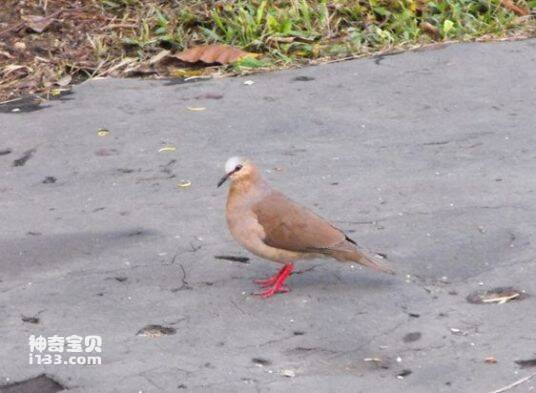Leptotila wellsi
IUCN
LCBasic Information
Scientific classification
- name:Leptotila wellsi
- Scientific Name:Leptotila wellsi,Grenada Dove
- Outline:Landfowl
- Family:
Vital signs
- length:About 31 cm
- Weight:No textual research information is available
- lifetime:No textual research information is available
Feature
The head and forehead are pink, the crown and nape are dark brown, and the body has two types of brown-gray feathers
Distribution and Habitat
It ranges from Grenada into the southern Lesser Antilles.
Grenadian palm dove inhabits seasonal forests, including semi-evergreen forests, seasonal deciduous forests, and thorny woodlands. Occasionally found around scattered small towns and on the outskirts of cities.
Appearance
Grenadian brown wing dove is 31 cm long, is a kind of strong body pigeon, beak claws straight or slightly curved, the base of the mouth is soft, covered with wax film, mouth end is swollen and horny; The neck and feet are short, and the shin is fully feathered. The throat is white, the face and forehead are pink, the crown and nape are dark brown, and the back is olive green. The base of the wings is miliary, the neck and upper thorax are pink, and the lower thorax, abdomen and bottom of the tail are white. In flight, the Grenadian palm dove's brown wings and white tail tip are very visible. The legs and feet of this species are pink and the beak is black.
Details
Its scientific name is Leptotila wellsi, and its foreign name is Grenada Dove.

Grenadian palm dove forages primarily on the ground, feeding mainly on seeds, and has also been reported to consume papaya fruits and crops. The breeding season of the Grenadian palm dove occurs mainly during the rainy season on the southwestern islands, and extends into the dry season on the west coast. The nest is built in the woods, shallow cup-shaped, and lays two eggs at a time.
The main threat to the Grenadian palm dove is habitat fragmentation and dispersal. Human activities, the development of arable land and animal husbandry, and deforestation have caused a significant decline in the population of this species.
Listed in the International Union for Conservation of Nature (IUCN) ver 3.1:2012 Red List of birds - Critically Endangered (CR).
Protect wild animals and eliminate wild meat.
Maintaining ecological balance is everyone's responsibility!








